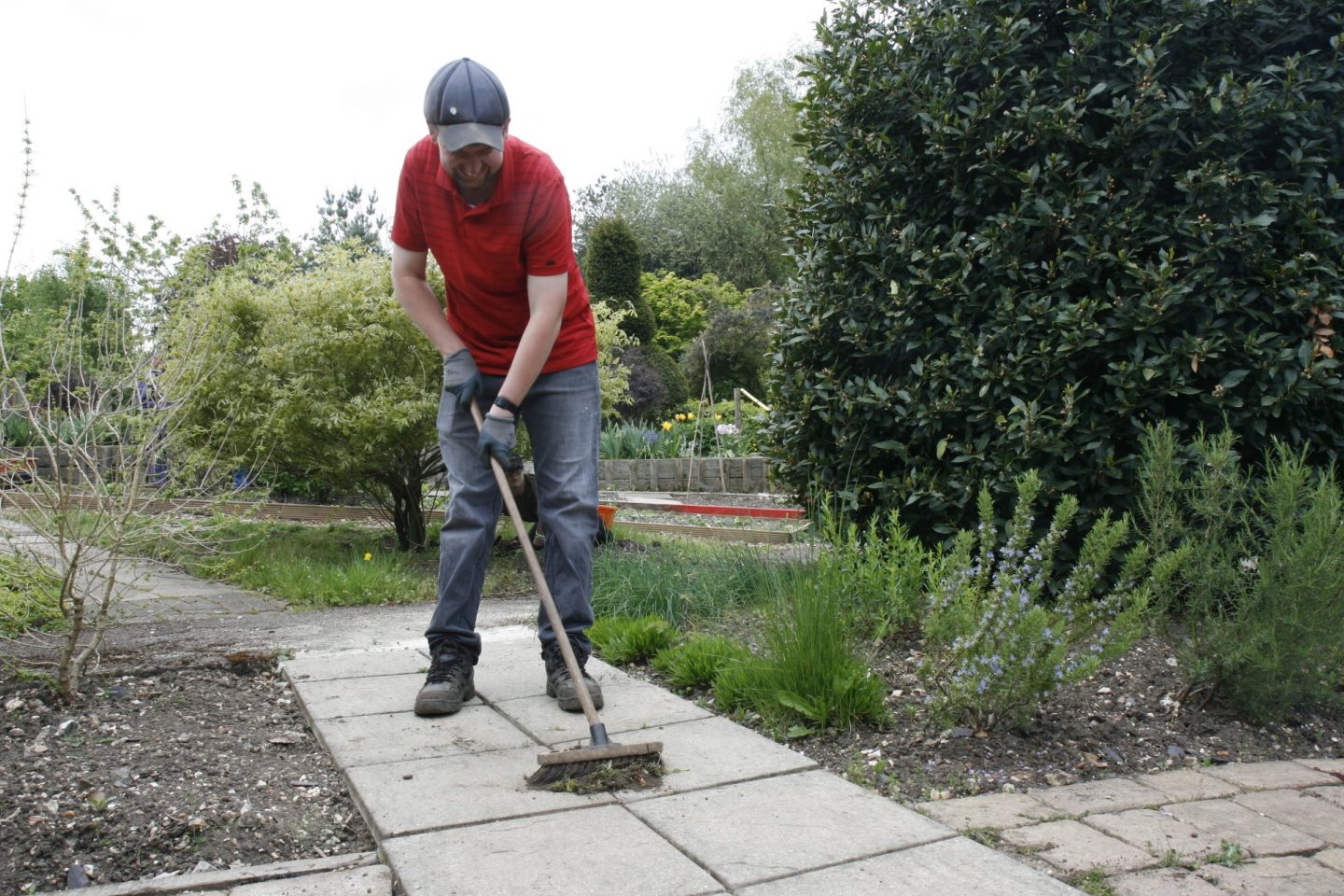Helpful information
Timing: All year around (especially autumn when leaves fall)
Where to do it: Outdoors
Garden space: Small garden, large garden , balcony

One of the most common times to sweep is in autumn as leaves fall. After you’ve weeded can also be a good time.
Timing: All year around (especially autumn when leaves fall)
Where to do it: Outdoors
Garden space: Small garden, large garden , balcony
Essential items
Optional items

Sweeping requires very little in the way of tools and equipment. The right size and weight items will reduce any strain when you do it.
Lightweight garden broom
A broom is a delightfully low-tech piece of equipment.
If you have challenges with energy, mobility, or garden with one hand choose a lightweight version. A broom with an aluminium handle and nylon bristles may be easier to handle.
If you love the idea of a wooden broom, a ‘witches’ style besom broom tends to be lighter than a traditional broom.
If you are in a wheelchair, or sit when you garden, look for a short-handled outdoor broom. Adding a slip-resistant band to the handle will make it easier and more comfortable to hold.
You can also find brooms with multi-change handles, giving greater choice on how long the broom is.
Search for lightweight garden brooms online
Leaf blower
A leaf blower is an alternative to a broom. You can use it to clear small amounts of debris, like leaves on your patio. It reduces bending and you can use it in a seated position. A leaf blower is heavier than a broom, though, so you may only want to use one for a few minutes at a time.
Search for leaf blowers online
Long-handled leaf grabber
Alongside sweeping comes clearing debris. A long-handled leaf grabber uses a scissor action to collect fallen leaves and other items. This reduces bending. It does need two hands to operate.
You may also see these called ‘grab and lift’ rakes or leaf collectors.
Search for long-handled leaf grabbers online
Dustpan and brush
A dustpan and brush can be helpful for sweeping if you have any sight loss (see below).
For clearing debris, a long-handled dustpan and brush is a good option if you want to reduce bending. You can also use it if you garden in a wheelchair or from a seated position.
Search for a dustpan and brush online
Litter picker
A litter picker allows you to collect debris without bending via the push of a button. It is suitable for use with one hand, if you have enough strength to keep pressing the gripping button. It may take a long time to clear debris using a litter picker.
Search for litter pickers online
Replace your broom regularly to ensure it has good strong bristles. Or, buy a broom with plastic or nylon bristles which take a lot longer to wear out.

Sweeping
The basic act of sweeping is straightforward. Brush debris into bigger piles. Once you’ve finished sweeping, clear these piles (see below).
It may help to move objects such as chairs out of the way first, so you can do a more thorough sweep.
There are ways you can reduce the risk of strain while sweeping, along with techniques to make it easier and more comfortable to do.
Clearing debris

Once you have swept leaves and other debris into piles, you will need to pick it up and dispose of it. This could be via your compost or the garden waste collection. Having a container or bucket near where you are working will allow you to collect more in one go.
Some council garden waste bins are on wheels. If this is the case and it is easily accessible, you could put debris straight into it.
If your garden waste bin is not on wheels, you could use a wheeled garden waste caddy instead. Or, use a two wheeled wheelbarrow. You can put the debris in and push to the compost heap, avoiding some bending.
If you are sweeping next to a flower bed or border, you could sweep the last of the debris straight into the bed. It will then rot down over time. This saves you picking up the last few bits, which might be small and fiddly.